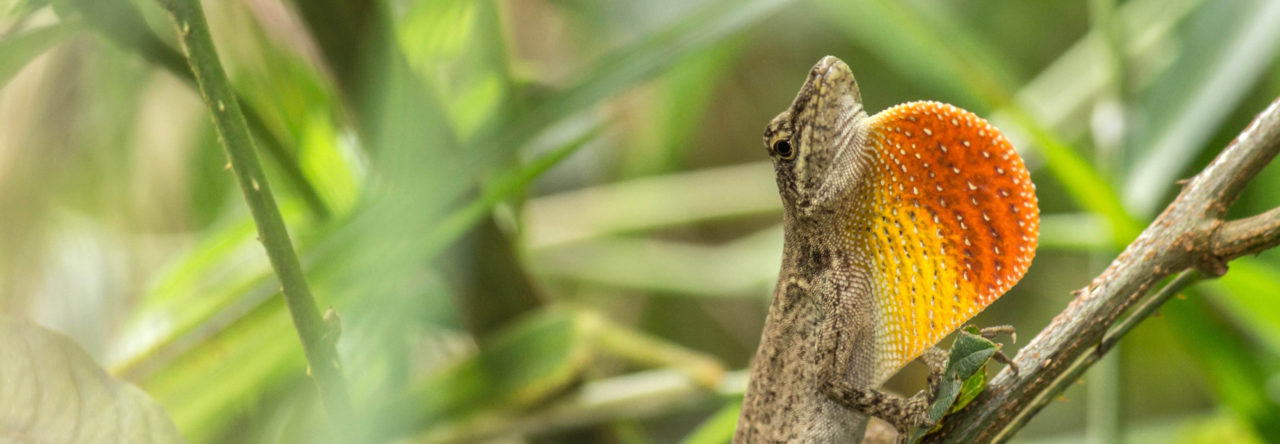
Anolis carolinensis (Green Anole) in the City of Norfolk (photo by Zachary Steele).
Growing up in Florida, I was used to seeing Green Anoles, so when I moved to Virginia to start my PhD at Old Dominion University, I wasn’t surprised to see Green Anoles venturing around Norfolk. If anything, seeing the familiar anoles for the first time in the Summer of 2021 gave me a warm feeling of home. However, several months later, I began to realize that I was only seeing these anoles in one specific location. When my friends and colleagues (such as my coauthors Antonella Panebianco and Karen Caceres) would join me on trips to a nearby public beach, we’d always see the anoles as we parked and made our way to the beach, but we never saw the anoles anywhere else. At this point, I began to realize that I’d never really looked closely at the native range of the Green Anole; I knew it extended into North Carolina, and I assumed Virginia as well based off our sightings, but I had never confirmed this. As a result, one day, after returning home from this beach, I found myself researching the native range of the Green Anole…and was shocked to uncover that the anole was not native to Virginia. Instead, I learned that while the anole population had been spreading north towards the North Carolina-Virginia border (although it’s unclear whether this was natural or expansion through introductions) over the last 60 years, the range had not yet expanded into Virginia. I also quickly determined that there was another non-native population of these anoles in Virginia Beach, roughly 20 miles east of the population that we had located.
After gathering this information, we began to put more effort into documenting this population via iNaturalist. This led to us realizing that the extent of this anole population (~ 35 acres) was larger than we previously perceived, and we also observed juvenile anoles which revealed that this was likely a breeding population. Additionally, through these efforts, we also realized other users had reported anoles from this introduced population on iNaturalist, with reports dating back to 2019. All this evidence suggested that this anole population had likely endured several winters and indicated that this was an established non-native population. While Norfolk can have some relatively harsh winters, these winters aren’t very different from the northernmost native range of the anole in Tennessee and North Carolina. Our observations also indicated that there wasn’t much potential for predation and competition for these introduced anoles, which suggested that this population has the potential to continue to grow.
Through this process, what we gathered was that it’s always a good idea to confirm the extent of a species’ native range. Documenting both natural range expansion and range expansion through human introductions is critical, and anyone can contribute to these efforts using platforms like iNaturalist and EDDMapS. Quickly uploading an observation to these types of platforms can really benefit the research community!
Check out the publication in Northeastern Naturalist for more information!


Leave a Reply